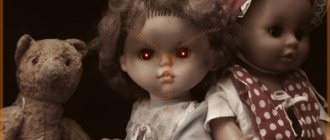June 07, 2021
There are a large number of huge structures in the world. These are different buildings, natural phenomena, pyramids, statues, ships, large animals, trees, stones, mountains. People never cease to be surprised and admired by such structures of humanity and nature. But there are certain individuals who experience panic just by looking at huge objects.
The fear of large objects is called megalophobia . Such people may be afraid of high-rise buildings, sculptures and monuments, large transport (plane, ferry, train), technical equipment, huge trees, large animals and even tall people.
With a long course of the disease, a person may stop going outside. Having locked himself in the apartment, the patient will be left alone with an all-consuming fear that will slowly drive him crazy.
What is megalophobia
Megalophobia is the fear of large objects, large objects, and tall buildings. What scares a megalophobe (objects of fear megalophobia):
- airplane,
- trains,
- statues,
- steamships,
- ships,
- large animals,
- mountains,
- waves,
- trees;
- tall and obese people.
Examples of frightening situations:
- diving (fear of large objects under water, such as large fish);
- walk past monuments and statues;
- being in a building with high vaults (combines megalophobia and apeirophobia - fear of infinity);
- boat trip;
- air travel.
Anything that makes a person feel small, helpless, and vulnerable when being around can provoke a panic attack. And if some megalophobes are afraid that a collapse will happen, a crash, and they will be crushed, then others feel an abstract threat and experience a whole range of unpleasant sensations.
Tallest statues in the world
Megalophobia not only seriously complicates life, but also deprives a person of the opportunity to admire world-famous sights.
The sculptural structures of the eastern peoples are distinguished by their incredible size and grandeur. For example, in Myanmar, a 116-meter tall figure of a standing Buddha was erected. At the time of its opening (February 21, 2008), the statue was the tallest sculpture in the world.
No less impressive is the Chinese “Buddha of the Spring Temple”. The height of the religious figure is 128 meters. The Amitabha Buddha statue (Ushiku Daibuzu), located in Japan, is the tallest bronze statue in the world. The figure was erected in 1995, the height of the Buddha is 100 meters.
Reasons for fear of large objects
Why is there a fear of large objects? There are two reasons for the development of megalophobia.
Megalophobia, causes:
- Childhood psychotrauma. A situation in which the child first felt helplessness and weakness. A situation in which a child has been subjected to violence, aggression, humiliation from an adult, an older child, or a large animal. For example, a child could be traumatized by constant humiliation from a father who loomed over the child and scolded him.
- Psychotrauma in childhood or adulthood associated with a disaster, collapse, flooding, etc. A story from the news, stills from a movie, childhood memories of fear due to the size or sounds that a large object made - this and much more can be the cause of fear in adulthood.
If the patient is not afraid of all large objects, but only of a certain category (which is more common), then it is worth looking for the primary phobia and its root causes. For example, megalophobia underwater may be associated with a fear of water, drowning, sharks, or death. And megalophobia in front of an airplane can be associated with a fear of heights, flying, plane crashes, and apeirophobia.
This is interesting! The fear of monuments is accompanied by the fear that they will come to life and cause harm to a person. If the patient has this particular form of disorder, then it is necessary to conduct a diagnosis for the presence of delirium, schizophrenia and other pathologies.
Self-treatment
Megalophobia, according to the psychologist, can be overcome independently if the patient is aware of his actions and understands that his fear is absurd. It is not recommended to constantly look at pictures with scary objects. This will only make the condition worse. The first step to recovery is not to think about fear, not to concentrate your attention on it.
Home therapy is no different from medical therapy and involves gradual adaptation to the subject of fear. You can walk past a large statue or the tallest building in the city every day, but not look at it. When the brain gets used to not noticing this object, you can begin to linger near it for a longer time without looking at it. Over time, the patient will be able to look at the object of fear without fear.
How to get rid of a phobia
The exposure method is used for treatment. It is aimed at reducing negative reactions to the object of megalophobia phobia. Under the supervision of a specialist, the client is immersed in frightening situations, models new behavioral strategies and tries them in practice. But first, individual consultations (conversations) are held with a psychologist or psychotherapist. The client shares his experiences, tells what specifically worries him. The psychologist finds the origins of fears and negative attitudes. Gradually, conversations include viewing frightening images and mentally imagining situations of encountering them. Only then, when the client can calmly withstand the previous stages, does the specialist organize real meetings with the object of fear.
For panic attacks, secondary neuroses and disorders, and sleep problems, medications are prescribed: antidepressants, tranquilizers, sedatives. They do not affect the cause of the phobia, but weaken its manifestations.
This is interesting! In the United States, a new method of psychocorrection is being actively used - computer games in virtual reality. In Russia, this method has also begun to be used, but it is not yet so widespread.
Relaxation
One of the best ways of self-medication and an auxiliary method of psychotherapy is relaxation. Fears arise and develop against a background of increased anxiety due to stress and overexertion. This method of getting rid of fears as relaxation is aimed at relaxing the body and mind.
How to conduct a relaxation session:
- sit on a chair or lie on the floor;
- imagine that your body is dissolving;
- imagine that you are fluffy;
- breathe evenly, measuredly, concentrate on breathing;
- if you catch yourself thinking other thoughts, then by force of will, turn your attention to your breathing;
- imagine a place or situation in which you feel confident, strong, big.
Repeat the lesson daily. Over time, you will be able not only to relax during relaxation, but also to switch your attention and maintain composure in frightening situations.
It is important! You can use other relaxation methods: aromatherapy, warm bath, massage, etc. Anything that helps you relax and get rid of bad thoughts will do.
Overcoming fear on your own
If the patient understands the reason for the fear of large objects and knows how to control a panic attack, then he can get rid of the disease on his own.
How to do it:
- Don't get hung up on fear and the idea of getting rid of it.
- Walk past scary objects with your friends as often as possible. Try to form positive associations with this place. Over time, the brain will rewire itself.
- Make a list of scary objects and places and start getting closer to them. You need to look fear in the eye, convince yourself that the fear is irrational, the object does not pose a threat.
- Repeat the approach training daily.
Follow the rules that will make it easier to deal with fear:
- Breathe deeply to avoid a panic attack, concentrate on breathing and counting.
- When approaching an object, think about something pleasant, remember or imagine something pleasant.
- Fight not with fear, but with its intensity. Analyze your condition and training dynamics.
- Give up alcohol and other bad habits.
- Play sports, yoga, meditation.
- If you feel that you cannot cope with fear, then consult a psychologist.
Symptomatic picture
Fear of everything big, like other phobias, has a clearly defined symptomatic picture, the main manifestation of which is a panic attack. In particularly severe cases, a person experiences a complete loss of control over his actions and behavior. A clear sign of fear is heaviness in the legs, numbness of the limbs, convulsions, epileptic seizures, spasms.
Symptoms of megalophobia:
- tachycardia;
- respiratory failure;
- compression in the chest area;
- loss in space;
- increased sweating;
- dizziness;
- stomach spasm.
In a calm environment, patients are fully aware of the absurdity of their behavior and its reasons. At the sight of a high-rise building, megalophobes are overcome with horror, causing a wild desire to run away and hide. Such people have one feature that distinguishes them from patients with other phobias. At home, they have an obsessive desire to look at pictures with frightening objects. The feeling of wild horror does not keep them from viewing thematic pictures.
What does an neglected phobia lead to?
Without treatment, the phobia will progress, and the list of frightening objects will expand. Sooner or later, the patient will not be able to leave the house, and perhaps the house itself will be driven into panic. Constant tension is dangerous due to exhaustion, the development of secondary disorders, disorientation, and inappropriate actions.
As the phobia develops, the subconscious endows huge objects with new qualities. At this stage, the thought of animated statues, pursuing planes and trains appears. Large objects come to the patient in dreams, which leads to insomnia or conscious sleep deprivation. It further aggravates the course of the disease, new fears, delusions, and hallucinations appear.
Consequences
Fear of large or enormous architectural objects must be treated in time, otherwise it will lead to disastrous consequences. First of all, it destroys connections with society. Patients are always aware of the absurdity of their behavior and are afraid to show feelings in front of acquaintances, strangers, and even more so strangers, which further aggravates their condition. In this case, relatives who notice the symptoms of the disease can help.
A terrible consequence of megalophobia is the appearance of secondary phobias, as well as more severe mental disorders. Patients are often tormented by nightmares in which they are pursued by planes, trains, or the houses in which they are located are destroyed.
Nightmares are a symptom of fear
Prevention
For prevention purposes, it is recommended to pay attention to the negative factors and causes of phobia. It is recommended to get rid of such qualities as suspiciousness, anxiety, suggestibility, impressionability. It is necessary to promptly treat neuroses, get rid of fears and anxieties, negative memories. It is recommended to avoid overwork and solve life’s difficulties in a timely manner, since fear of large objects can be a subconscious transfer of fear of accumulated difficulties and responsibilities.
Types of childhood fear
Conventionally, all children's fears can be divided into 2 groups: instinctive and social.
Instinctive fears are:
- fear of death;
- fear of getting lost;
- fear of darkness, depth, heights;
- fear of confined spaces;
- fear of the elements (for example, fear of water);
- fear of animals and insects;
- fear of doctors (simultaneously with fear of injections, the sight of blood).
Social fears are:
- fear of loneliness;
- fear of condemnation and punishment;
- fear of ridicule.
As a rule, the simplest and most common fears of childhood, which adults do not pay attention to in time, can develop into phobias and cause a lot of trouble.
Fear of the dark
There is probably not a single parent who would not persuade a child not to be afraid, citing reasonable arguments about the safety of the home. But the child still asks to leave the light on and refuses to enter a dark room. The fact is that behind the fear of darkness lies the fear of the unknown. The child needs visual confirmation of his thoughts, despite the child's ability to imagine. He needs to see with his own eyes, even if the child knows that familiar objects are waiting for him.
If the fear of the dark is devalued and ignored, the adult is left with the fear of the unknown. This leads to apathy and isolation.
Fear of getting lost
Most often this is a condition imposed by parents. Children are often told: “be visible, otherwise you will get lost,” “be visible, so that I can be calm.” That is, we are talking primarily about the interests of an adult. By endlessly repeating the attitude “you will get lost,” the adult instills in the child the idea of always being visible. And then everything will be okay. Growing up, such children are sure that their well-being directly depends on their popularity. They try to “be visible” by any means possible, including those that are dissonant with society. With such a pathological desire for popularity, healthy socialization does not occur. A person essentially still gets “lost” in the crowd and remains alone.
Fear of death
Often a child has to experience the death of a relative at a fairly early age. The main thing that parents need to remember: children do not need to be taken to funerals and wakes. In such a situation, several factors attack the fragile child’s psyche at once: the unknown, an incomprehensible situation, the atmosphere, the behavior of loved ones. The child realizes that something bad and irreparable happened to a loved one (for example, to a beloved grandmother), but does not understand why. What if it was because he didn’t listen? While adults are busy with their worries, the little person’s world is turned upside down several times and an acute fear comes that this could happen to anyone. In adulthood, this leads to the desire to “waste” life and take unjustified risks. All this happens because a person who has experienced the fear of death in childhood needs to feel alive and unharmed every day, to prove this to himself in every possible way. The problem of alcoholism and drug addiction is also closely related to children's fear of death.
Fear of rejection
Another common emotional state comes from childhood. Many factors contribute to the emergence of such fear, the main one of which is the attitude towards the child in the family. Rejection by one’s own parents, constant devaluation of children’s problems and experiences leads to the fact that the child begins to feel alien and unnecessary not only in the family, but also among peers. Adults who grew up with such an attitude feel unworthy of attention and love, and are afraid of condemnation from society.
They try to attract attention to themselves as little as possible and isolate themselves from society. This condition often leads to depression
Psychological defense and emotional presence
Photo from popsugar.com.au
When it comes to physical safety, we can actually consider many of the most common things that can save lives. But we can also give him psychological protection - and this is no less important. The child needs our protection - it gives him peace of mind, the perception of this world as friendly, allows him to calmly explore the world and develop
The child needs our protection - it gives him peace of mind, the perception of this world as friendly, allows him to calmly explore the world and develop.
In psychology, this is called “secure attachment” - the emotional availability of the mother, her sensitivity, attention to the needs of the child. This is more important than just leading him by the hand and physically protecting him from danger. . When talking about attachment theory, the thesis about the “stable presence of the mother” is often mentioned.
It is mistakenly understood to mean that the mother does not physically leave the child. This is not true - it means emotional presence
When talking about attachment theory, the thesis about the “stable presence of the mother” is often mentioned. It is mistakenly understood to mean that the mother does not physically leave the child. This is not true - what we mean is emotional presence.
Protecting a child here can be difficult. Often we are afraid that someone will cause mental pain to our child, even more than we are afraid of physical pain. But this is also a law of life: there are different people in the world, and sooner or later the child will also encounter them.
Of course, we can choose a friendly environment for the child - a good kindergarten, clubs, circle of acquaintances. But it is still within our power to form that very secure attachment so that the child knows:
If something bad happens to me, I can turn to my parents for help and support. This is the key thing.
It is up to us to be accepting, loving, empathetic, and to provide support to the child. When we ourselves respect a child, he grows up with the feeling that this is how it should be: I am good and I deserve to be treated well.
This is something that should be taught from childhood, not English-dance-aikido.
The greatest gift to a child and the best protection is for him to feel “entitled.” Formal care without this means nothing.
“When discussing dangers, the main thing is not to instill in children your fears” Maria Kotreleva, 9 children, from 24 to 5 years old: I have a lot of children, and I gradually learned to curb my fears. My eldest daughter, at the age of 18, decided to go alone to Europe. I was very scared! I told her all my fears, but she said: I understand you, but this is my life
And this is important: the child has the right to have his own experience, it will not be the same as yours. In this sense, I try to trust God. When discussing dangers, the main thing is not to instill in children your fears. Here, I confess, I made a mistake: I’m terribly afraid of spiders, and I unwittingly passed this phobia on to my children
Now we are squealing with the whole family, and there is no one who could drive this spider away from us. So fears can be discussed, we can say that this happens and how to avoid it. But they cannot be broadcast. Of course, all sorts of “scary things” have happened to us, and when everyone is relaxed and does not expect a trick. And our child fell from a height and broke his leg. And my daughter left the playground alone - they searched with the police. Of course, you want to fasten yourself with a short leash and not let go. But what will happen then? I pray when I’m really worried. It helps. I pray and let go.”
Diagnostics
It is not difficult to identify a phobia of sharp objects; it is an isolated form of the disease, that is, it has only one group of similar objects. If you are constantly afraid of the sight of scissors or the idea of a knife, then you are clearly suffering from this disease.
Diagnosing the cause of a phobia is much more difficult. To do this, you need to contact a psychologist. During the conversation, the specialist will study the characteristics of the client’s life, his history of childhood and development. The psychologist will quickly and accurately determine what the trigger mechanism was.
Aichmophobia test
There is no thematic test to identify aichmophobia. The subject of fear is already clear to the psychologist and the patient. But to determine the severity of a phobia, tests are used to determine the level of anxiety and to identify phobias as such. For example, you can use the Zang scale or the Spielberg-Hanin test.
Symptoms
How does the body react to heights with acrophobia?
- The head refuses to perceive reality and is treacherously spinning.
- The stomach strives to return its contents to the outside. Cases of diarrhea are common.
- The heart may either slow down or begin to jump out of the chest.
- Tremors in the hands or feet are also quite common with fear of heights.
- Excessive sweating and frequent urination make it impossible to live normally.
- The muscles remember what state they were in at birth, which is why “hypertonicity” occurs.
- The pupils completely fill the eye.
- Nightmares and poor sleep deplete a person’s nervous system and exhaust the body.
Proven means
Article on the topic Phobias of great people. What were Dali, Gogol, Freud and Hitchcock afraid of?
A severe form of aerophobia, regardless of the reasons for its occurrence, requires special correction and observation by a psychotherapist. According to medical statistics, up to 90% of aerophobes, after meeting with a psychiatrist, said goodbye to their fear once and for all. Usually the doctor suggests undergoing auto-training, and if necessary, prescribes drug therapy - a combination of sedatives, various beta-blockers and antidepressants that increase the release of serotonin. This hormone affects emotional stability and susceptibility to stress. If serotonin is normal, it is easier for a person to cope with feelings of fear.
Fears based on the child's traumatic experience or neurotic fears.
They are the most powerful and difficult to eradicate. If you do not provide such a child with timely help, the situation may become complicated, even to the point of personality collapse.
So, having experienced some kind of tragedy or violence, a child will carry this memory throughout his life. If this moment coincides with some kind of age-related fear, or the child himself is very vulnerable, or there is no trust in the parents, the effect of fear intensifies.
In this case, the perception of oneself as an integral, self-sufficient person may be distorted, and various behavioral stereotypes that are not typical for a child may appear (motor, vocal tics, encopresis, enuresis, etc.).
In more severe cases, when fear exceeds the body's capabilities, the child may lose touch with reality.
How can parents distinguish real fear from attempts to manipulate adults?
There are children who feign fears in hopes of avoiding something or someone. Here you can understand by the child’s behavior. Fear itself is a fairly strong emotion, the child’s body reflects his feelings well: it is pinched, constrained, he has a noticeable “glassy look”, numbness (as if paralyzed by fear), or you can observe flight from the source of danger, a piercing cry, random grasping movements. movements.
A child feigning fear reveals himself through involuntary, sometimes unnecessary, movements. For example, when telling a lie, he averts his eyes, hides his hands or covers his mouth with them. The emotions of fear are not bright, the reason is emphasized: “I’m afraid..., and I want/don’t want...”
However, when a child says that he is afraid of something, the first thing to do is to believe him and support him, help him cope with his emotion. And observe his behavior to determine the cause. Then draw conclusions about imaginary or real fear.
To prevent your child from being overcome by fears, surround him with unconditional love, provide him with safety and security, both physical and psychological. For some reason, many parents forget about the latter...
Only a self-confident child who trusts his parents is able to overcome any fears!
Dear parents, please share in the comments whether the article about children’s fears helped you? What child fears have you already encountered? What did you do to overcome them?
Expert advice
Here are eleven recommendations on how to act for aerophobes, given by specialists from the above-mentioned centers:
- Keep stress to a minimum . Here's what you need to do to achieve this. Before your flight, be sure to get enough sleep. It is better to check in online at home by printing out your boarding passes. It is better not to take large luggage with you - you will have to stand in line for weighing with it; it is better to get by with hand luggage. Choose the most comfortable way to arrive at the airport.
- It is important to choose comfortable seats on the plane, where turns and shakes will not be felt . In the Boeing 737-800 this is from rows 12 to 18, in the Airbus A320 - from 8 to 15. In any case, do not sit in the back - you will certainly get motion sickness there.
- You need to dress comfortably for the trip , no buttoned collars or tight ties - clothes and shoes should be comfortable. It is advisable not to wear watches with a tight strap, narrow bracelets, or rings.
- Grab a special neck pillow.
- Don't be shy about telling your guides about your phobia . Quite often they are imbued with such a problem and can take you into the cockpit and introduce you to the crew. This, as psychologists say, will eliminate the depersonalization of those driving the plane and will provide an opportunity to gain confidence in their professionalism.
- Get distracted and have fun . Nowadays they offer movies on planes, but you may not like them. Therefore, it is advisable to prepare in advance: download some interesting film, audiobook, or game to your smartphone or tablet. And don't forget to take your headphones with you!
- Relax . To do this, you can breathe deeply, slowly count to ten to yourself, or chant mantras.
- Find an interesting interlocutor . This, of course, is difficult, but maybe you will be lucky and your neighbor will distract you from your imagination-inducing fantasies with his stories. A flight attendant can be a good conversationalist.
- Drink more . We are not talking about alcoholic beverages, although a glass of champagne in honor of the holiday would not hurt, but about juice or still water. The air in the cabin is dry, and this will help cope with thirst.
- Restore blood circulation . To do this, you need to walk around the salon, bend over several times, and rise on your toes. If you are embarrassed to draw attention to your person in this way, then you can sit straight in a chair, straighten your shoulders and rotate your hands and feet.
- For general development, inquire in advancehow airplanes are designed and fly, and their level of safety. That is, as already mentioned, to learn materiel.










